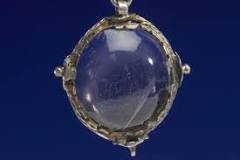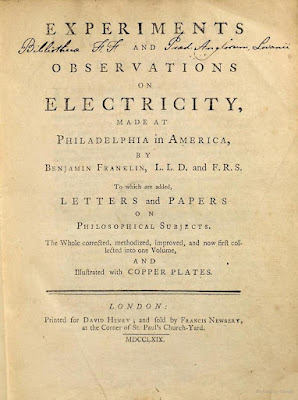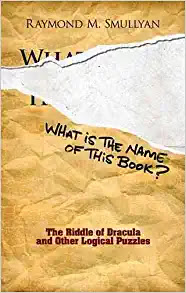~ Raymond Smullyan on criticism
The 145th day of the year; 145= 1! + 4! + 5!. There are only four such numbers in base ten. 1, 2 and 145 are three of them, what's the fourth? (answer at bottom of post) Such numbers are called factorions, a term created by Cliff Pickover in 1995
145 is the result of 34 + 43, making it a Leyland number. a number of the form xy + yx where x and y are integers greater than 1. They are named after the British number theorist, Paul Leyland. (There are ten days of the year that are Leyland numbers)
Prime Curios points out several curiosities related to 145, The 145th prime number is 829 and their concatenation, 145829 is prime. And the largest prime factor of 145, is 1+4+5+8+2+9. and 149 is congruent to 1 in mod 8, mod 2, and mod 9
The process of summing the squares of the digits of a decimal number has two results, one is the eventual decent to 1, and being called a Happy number. 145 is the largest Unhappy number. Unhappy numbers eventually land on one of the numbers in the eight cycle, 4 → 16 → 37 → 58 → 89 → 145 → 42 → 20 → 4 ... (any three digit number, for example, produces a sum of squares less than or equal to 243. Any of the numbers you land on that are greater than 145 and less than 243 has a sum of squares of its digits that is less than itself, and eventually they land on one of the chains that lead to the eight cycle shown. Some numbers (like 99) iterate to a number greater than 145, but they then recede back into the inexorable "cycle of unhappiness" above. (A great exploration for students to create the trees of all numbers less than 200 that go to either 1, or the unhappy cycle)
1581 John Dee, mathematician and mystic, first saw spirits in his crystal globe. [Daniel Cohen, Masters of the Occult , Dodd and Mead, 1971, p. 28] *VFR
It is believed that Dee used his Claude glass as a crystal ball to look into the future, a practice known as scrying and a form of divination.
 |
| *Wik |
1694 Isaac Newton to Nathaniel Hawes: “A Vulgar Mechanick can practice what he has been taught or seen done, but if he is in an error he knows not how to find it out and correct it, and if you put him out of his road, he is at a stand; Whereas he that is able to reason nimbly and judiciously about figure, force and motion, is never at rest till he gets over every rub.” Westfall takes this as the title of his fabulous biography of Newton, Never at Rest. Reportedly he received one of the early Golden Fleece Awards of Senator Proxmire for a grant to write this book. [But we have been unable to find a reference for this last statement.] *VFR
1721 John Copson of High Street in Philadelphia posted an offering in the American Weekly Mercury on this date announcing that he would open an office to provide fire insurance for "vessels, goods, and merchandise." With that, he became the first Insurance agent in continental America. *Kane, First Famous Facts He opened his office near Penn’s Landing in Philadelphia on June 2 of that year.
The actual complete ad read:
"Assurances from Losses happening at Sea ect. [sic] being found to be very much for the Ease and benefit of the Merchants and Traders in general, and whereas the merchants of this city of Philadelphia and other parts, have been obliged to send to London for such Assurance, which has not only been tedious and troublesome, but even very precarious. For remedying of which, An Office of Publick Insurance on Vessels, Goods and Merchandizes, will, on Monday next, be Opened, and Books kept by John Copson of this City, at this House in the High Street, where all Persons willing to be Insured may apply: And Care shall be taken by the said J. Copson That the Assurors or Underwriters be Persons of undoubted Worth and reputation and of considerable Interest in this City and Province."
1747 Benjamin Franklin describes his electrical experiments in a letter to Peter Collinson. " Hence have arisen some new Terms among us. .... Or rather B is electrised plus and A minus. And we daily in our Experiments electrise Bodies plus or minus as we think proper. These Terms we may use till your Philosophers give us better. To electrise plus or minus, no more needs to be known than this; that the Parts of the Tube or Sphere, that are rub'd, do, in the Instant of the Friction, attract the Electrical Fire, and therefore take it from the Thing rubbing: the same Parts immediately, as the Friction upon them ceases, are disposed to give the Fire they have received, to any Body that has less." *Collinson, "Experiments and Observations on Electricity Made at Philadelphia in America."
1773 After more than a decade as master of his school in Newcastle, author, and shameless self promoter, Charles Hutton was appointed professor of mathematics of the Royal Military Academy at Woolwich. In 18 years he had gone from poorly educated coal miner, to Professor. *Gunpowder and Geometry, Benjamin Wardhaugh
He was professor of mathematics at the Royal Military Academy, Woolwich from 1773 to 1807. He is remembered for his calculation of the density of the earth from Nevil Maskelyne's measurements collected during the Schiehallion experiment.
1832 Galois writes to his friend, Auguste Chevalier, about his broken romance for Stephanie. The fatal duel looms only five days away. Mario Livio tells the story wonderfully in "The Equation That Couldn't be Solved".
1842 Johann Christian Doppler (1803–1853) presented a lecture on the Doppler effect. It was first experimentally verified in 1845 using a locomotive drawing an open car with several trumpeters. *VFR
The hypothesis was tested for sound waves by Buys Ballot in 1845.
 |
| *Wik |
1844 the first news communicated by telegraph in the U.S. was sent 80 miles to the Baltimore Patriot, Maryland, from Washington, D.C. giving the information that "One o'clock. There has just been made a motion in the House to go into committee of the whole on the Oregon question. Rejected. Ayes 79 - Nays 86." This was just one day after Samuel Morse transmitted his famous "What hath God wrought!" message from the U.S. Supreme Court room and opened America's first telegraph line linking Washington and Baltimore.*TIS
1862 Caricature published to celebrate first aerial photographer, Nadar, was Published in Le Boulevard. Nadar "elevating photography to the condition of art", caricature by Honoré Daunier. The first known aerial photograph was taken in 1858 by French photographer and balloonist, Gaspar Felix Tournachon, known as "Nadar". In 1855 he had patented the idea of using aerial photographs in mapmaking and surveying, but it took him 3 years of experimenting before he successfully produced the very first aerial photograph. It was a view of the French village of Petit-Becetre taken from a tethered hot-air balloon, 80 meters above the ground. This was no mean feat, given the complexity of the early collodion photographic process, which required a complete darkroom to be carried in the basket of the balloon! Unfortunately, Nadar's earliest photographs no longer survive, and the oldest aerial photograph known to be still in existence is James Wallace Black's image of Boston from a hot-air balloon, taken in 1860. Following the development of the dry-plate process, it was no longer necessary carry so much equipment, and the first free flight balloon photo mission was carried out by Triboulet over Paris in 1879. *History of Aerial Photography
1946 The Soviet Union issued two stamps to celebrate the 125th anniversary of Pafnuti Lvovich Chebyshev (1821–1894). [Scott #1050-1].*VFR (see May 16th Births)
1961 the formal announcement of an American lunar landing was made by President John F. Kennedy speaking to the Congress: "I believe that this nation should commit itself to achieving the goal, before this decade is out, of landing a man on the Moon and returning him safely to the Earth. No single space program in this period will be more impressive to mankind, or more important in the long-range exploration of space; and none will be so difficult or expensive to accomplish." *TIS
1968
The Gateway Arch in St Louis, Missouri was inaugurated on this date by U S Vice President, Hubert Humphrey. Although it is often mistaken for a parabola, the arch is built in the form of an inverted, weighted catenary arch. It is the world's tallest arch, the tallest man-made monument in the Western Hemisphere, and Missouri's tallest accessible building. Built as a monument to the westward expansion of the United States,the centerpiece of the Jefferson National Expansion Memorial and has become an internationally famous symbol of St. Louis. Appropriately, Thomas Jefferson is credited for the first use of the term catenary in English in correspondence with Thomas Paine on bridge construction.. *Wik *@HistoryTime_
2142 The next total solar eclipse in Ostend, Belgium. The last total solar eclipse took place more than 11 centuries ago, 29 September 878. But only 9 years later, on 14 June 2151, there will be another one. *NASA Solar Eclipse Catalog (I know I can hardly wait!)
1828 Karl Peterson (25 May 1828 in Riga, Russia (now Latvia) - 19 April 1881 in Moscow, Russia)
was a Latvian mathematician worked in differential geometry and partial differential equations. .. by means of a uniform general method, he deduced nearly all the devices known at that time for finding general solutions of different classes of equations.
*SAU
1873 Michele Angelo Besso (25 May 1873 Riesbach – 15 March 1955 Genoa) was a Swiss/Italian engineer of Jewish Italian (Sephardi) descent. He was a close friend of Albert Einstein during his years at the Federal Polytechnic Institute in Zurich, today the ETH Zurich, and then at the patent office in Bern. Besso is credited with introducing Einstein to the works of Ernst Mach, the sceptical critic of physics who influenced Einstein's approach to the discipline. Einstein called Besso "the best sounding board in Europe" for scientific ideas.
In a letter of condolence to the Besso family Albert Einstein wrote his now famous quote "Now Besso has departed from this strange world a little ahead of me. That means nothing. People like us, who believe in physics, know that the distinction between past, present and future is only a stubbornly persistent illusion" *Wik
1919 Raymond Merrill Smullyan ( May 25, 1919 -February 6, 2017) is an American mathematician, concert pianist, logician, Taoist philosopher, and magician. His first career (like Persi Diaconis a generation later) was stage magic. He then earned a BSc from the University of Chicago in 1955 and his Ph.D. from Princeton University in 1959. He is one of many logicians to have studied under Alonzo Church. Smullyan is the author of many books on recreational mathematics, recreational logic, etc. Most notably, one is titled "What Is the Name of This Book?". *Wik For example the book is described on the cover as follows:"Beginning with fun-filled monkey tricks and classic brain-teasers with devilish new twists, Professor Smullyan spins a logical labyrinth of even more complex and challenging problems as he delves into some of the deepest paradoxes of logic and set theory, including Gödel's revolutionary theorem of undecidability."
Martin Gardner described this book in Scientific American as:"The most original, most profound and most humorous collection of recreational logic and mathematics problems ever written."
1954 Clyde P. Kruskal (born May 25, 1954) is an American computer scientist, working on parallel computing architectures, models, and algorithms. He got his A.B. degree in mathematics and computer science from Brandeis University, M.Sc. (1978) and Ph.D. (1981) from New York University under Jack Schwartz. Since then he has worked as assistant professor at University of Illinois (1981–85) and University of Maryland, College Park (1985–88), as associate professor (1988–). He has published extensively, becoming an ISI highly cited researcher. His father was the world-renowned mathematician Martin Kruskal. *Wik
1555 Gemma Frisius ; (December 9, 1508–May 25, 1555) was a Dutch mathematician who applied his mathematical expertise to geography, astronomy and map making. He became the leading theoretical mathematician in the Low Countries.*SAU Frisius created or improved many instruments, including the cross-staff, the astrolabe and the astronomical rings. His students included Gerardus Mercator (who became his collaborator), Johannes Stadius, John Dee, Andreas Vesalius and Rembert Dodoens.*Wik
It was Frisius who created the modern symbol for degrees, o , in the 1569 edition of Arithmeticae practicae moethodus facilis. *Cajori
Math Historian Thony Christie informed me that "Regnier Gemma Frisius", a name sometimes used for him (and I had) was not his name. "His birth name was Jemme Reinerzoon, i.e. Jemma son of Reiner, his humanist name simply Gemma Frisius."
1676 Johann Rahn (10 March 1622 in Zürich, Switzerland - 25 May 1676 in Zürich, Switzerland)
was a Swiss mathematician who was the first to use the symbol "÷",called an obelus, for a division symbol in Teutsche Algebra (1659). The invention is also sometimes credited to British Mathematician John Pell who was Rahn's tutor for a while. The book, written in German, contains an example of Pell's equation also. Here is more on the various symbols used for division
1956 Johann Radon (16 December 1887 – 25 May 1956) worked on the calculus of variations, differential geometry and measure theory.
Radon is known for a number of lasting contributions, including:
- his part in the Radon–Nikodym theorem;
- the Radon measure concept of measure as linear functional;
- the Radon transform, in integral geometry, based on integration over hyperplanes — with application to tomography for scanners (see tomographic reconstruction);
- Radon's theorem, that d + 2 points in d dimensions may always be partitioned into two subsets with intersecting convex hulls
- the Radon-Hurwitz numbers.
- He is possibly the first to make use of the so called Radon-Riesz property. *Wik
1989 Ruby Violet Payne-Scott, (28 May 1912 – 25 May 1981) was an Australian pioneer in radiophysics and radio astronomy, and was the first female radio astronomer.
One of the more outstanding physicists that Australia has ever produced and one of the first people in the world to consider the possibility of radio astronomy, and thereby responsible for what is now a fundamental part of the modern lexicon of science, she was often the only woman in her classes at the University of Sydney.
Her career arguably reached its zenith while working for the Australian government's Commonwealth Scientific and Industrial Research Organisation (then called CSIR, now known as CSIRO) at Dover Heights, Hornsby and especially Potts Hill in Sydney. Some of her fundamental contributions to solar radio astronomy came at the end of this period. She is the discoverer of Type I and Type III bursts and participated in the recognition of Type II and IV bursts.
She played a major role in the first-ever radio astronomical interferometer observation from 26 January 1946, when the sea-cliff interferometer was used to determine the position and angular size of a solar burst. This observation occurred at either Dover Heights (ex Army shore defence radar) or at Beacon Hill, near Collaroy on Sydney's north shore (ex Royal Australian Air Force surveillance radar establishment - however this radar did not become active until early 1950).
During World War II, she was engaged in top secret work investigating radar. She was the expert on the detection of aircraft using PPI (Plan Position Indicator) displays. She was also at the time a member of the Communist Party and an early advocate for women's rights. The Australian Security Intelligence Organisation (ASIO) was interested in Payne-Scott and had a substantial file on her activities, with some distortions.
*Wik
 |
| *Wik |
**The fourth factorion is 40585 = 4! + 0! + 5! + 8! + 5!
Credits
*CHM=Computer History Museum
*FFF=Kane, Famous First Facts
*NSEC= NASA Solar Eclipse Calendar
*RMAT= The Renaissance Mathematicus, Thony Christie
*SAU=St Andrews Univ. Math History
*TIA = Today in Astronomy
*TIS= Today in Science History
*VFR = V Frederick Rickey, USMA
*Wik = Wikipedia
*WM = Women of Mathematics, Grinstein & Campbell







No comments:
Post a Comment